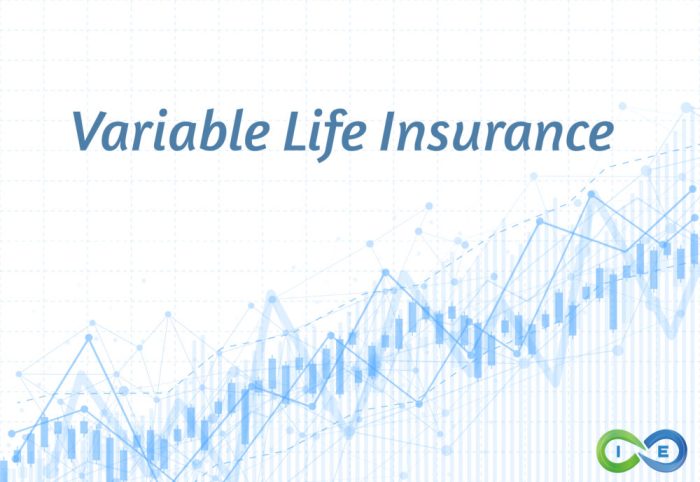Flexible premium variable life insurance offers a unique blend of life insurance protection and investment potential. Unlike traditional life insurance policies, this option allows for adjustable premium payments and invests your cash value in a range of market-based options. This dynamic approach provides flexibility, but also introduces investment risk, making it crucial to understand the intricacies before making a decision.
This guide will delve into the core features of flexible premium variable life insurance, examining its advantages and disadvantages, investment options, and the importance of careful planning. We’ll explore how premium flexibility works, the factors influencing cash value growth, and the potential impact of fees. Ultimately, we aim to equip you with the knowledge to assess whether this type of policy aligns with your financial goals and risk tolerance.
Defining Flexible Premium Variable Life Insurance

Flexible premium variable life insurance (FLPVL) offers a unique blend of investment and life insurance protection. It provides a death benefit, but unlike traditional life insurance, the cash value component grows based on the performance of the underlying investment options chosen by the policyholder. This flexibility and investment potential make it a distinct option within the broader landscape of life insurance products.
Core Features of Flexible Premium Variable Life Insurance
FLPVL policies allow for variable premium payments, meaning you’re not locked into a fixed premium amount each year. You can adjust your payments based on your financial situation, increasing or decreasing them within certain limits as specified in the policy. The cash value grows tax-deferred, meaning you won’t pay taxes on the earnings until you withdraw them. Crucially, the death benefit is not fixed; it fluctuates depending on the performance of the chosen investment sub-accounts within the policy. Policyholders typically select from a range of investment options, mirroring mutual funds, with varying levels of risk and potential return.
Differences Between Flexible Premium Variable Life Insurance and Other Life Insurance Types
FLPVL differs significantly from term life and whole life insurance. Term life insurance provides coverage for a specified period (the term) and offers no cash value accumulation. Whole life insurance, on the other hand, offers lifelong coverage and a guaranteed cash value component that grows at a fixed rate. In contrast, FLPVL offers lifelong coverage (as long as premiums are paid) but its cash value growth is variable and depends entirely on market performance. The risk and potential reward are considerably higher compared to whole life insurance, but lower than investing solely in the market without the death benefit.
Cash Value Component in Flexible Premium Variable Life Insurance
The cash value component of a FLPVL policy is directly tied to the performance of the chosen investment sub-accounts. Premiums, after deducting expenses and mortality charges, are invested in these sub-accounts. If the investments perform well, the cash value grows. Conversely, poor investment performance can lead to a decrease in cash value, even potentially to zero. Policyholders can borrow against the cash value, but this reduces the death benefit and incurs interest charges. Withdrawals are also possible, but they can impact the death benefit and may be subject to surrender charges. It’s essential to understand that the cash value is not guaranteed and is subject to market fluctuations.
Comparison of Flexible Premium Variable Life Insurance, Term Life Insurance, and Whole Life Insurance
| Feature | Flexible Premium Variable Life | Term Life Insurance | Whole Life Insurance |
|---|---|---|---|
| Premium Payments | Flexible | Fixed | Fixed |
| Coverage Period | Lifelong (premium dependent) | Specified term | Lifelong |
| Cash Value | Variable, investment-based | None | Fixed, guaranteed growth |
| Death Benefit | Variable, based on cash value and policy terms | Fixed | Fixed |
Investment Options and Risk
Flexible premium variable life insurance offers a range of investment options, allowing policyholders to tailor their investment strategy to their risk tolerance and financial goals. Understanding these options and the inherent risks is crucial for making informed decisions. The potential for high returns is balanced by the possibility of significant losses, highlighting the importance of careful consideration.
Investment options typically include a variety of sub-accounts, each investing in different asset classes such as stocks, bonds, and money market instruments. These sub-accounts are managed by professional investment managers, and their performance fluctuates based on market conditions. Policyholders can allocate their premiums across these sub-accounts, creating a personalized portfolio that reflects their investment preferences.
Available Investment Sub-accounts
Policyholders can typically choose from a selection of sub-accounts, each with a different investment objective and level of risk. For example, there might be sub-accounts focused on aggressive growth (primarily stocks), moderate growth (a mix of stocks and bonds), or conservative growth (primarily bonds and money market instruments). The specific sub-accounts offered will vary depending on the insurance company. Each sub-account will have its own expense ratio and investment strategy, which should be carefully reviewed before making an allocation decision.
Risks Associated with Variable Life Insurance Investments
The variable nature of the investment component introduces significant risk. The value of the investments within the policy can fluctuate, potentially leading to losses. Market downturns can significantly impact the cash value of the policy, and there is no guarantee that the investments will perform as expected. Policyholders should be prepared for the possibility of losing some or all of their invested premium. Moreover, the insurance company’s fees and expenses will also reduce the overall return.
High and Low Investment Return Scenarios
Consider two hypothetical scenarios: In a high-return scenario, a policyholder invests $10,000 annually for ten years in a sub-account heavily weighted towards stocks. If the average annual return is 8%, the policy’s cash value could reach approximately $156,480 after ten years, before considering fees and mortality charges. However, if the market experiences a downturn and the average annual return is -2%, the cash value might only be around $88,500 after the same period. This illustrates the significant impact market fluctuations can have on investment outcomes.
Hypothetical Investment Strategy
A conservative investor with a low risk tolerance might allocate a larger portion of their premiums to bond-focused sub-accounts, prioritizing capital preservation over high growth. Conversely, an aggressive investor with a high risk tolerance might allocate a larger portion of their premiums to stock-focused sub-accounts, accepting higher risk for the potential of greater returns. A moderate investor might adopt a balanced approach, diversifying across different sub-accounts to mitigate risk while still pursuing growth. It’s important to remember that any investment strategy should align with the individual’s financial goals and risk tolerance. Regular monitoring and rebalancing of the portfolio are also essential to maintain the desired level of risk and return.
Fees and Charges

Understanding the fee structure of a flexible premium variable life insurance policy is crucial for accurately assessing its potential return on investment. Various fees can significantly impact your cash value growth over time, sometimes eating into a substantial portion of your contributions. It’s essential to carefully compare fee structures across different providers before making a decision.
Types of Fees
Several types of fees are typically associated with flexible premium variable life insurance. These include mortality and expense charges, administrative fees, and potentially other charges depending on the specific policy and provider. Mortality and expense charges are usually the largest components, covering the insurer’s costs of providing death benefits and managing the policy. Administrative fees cover the ongoing costs of maintaining your policy. Some policies may also include surrender charges if you withdraw funds early, or other fees associated with specific policy riders or features.
Impact of Fees on Return
Fees directly reduce the amount available for investment within the policy’s underlying investment accounts. Consider a scenario where an individual invests $10,000 annually for 20 years. A policy with higher fees will have less money allocated to the investment accounts, resulting in lower potential growth compared to a policy with lower fees. Even small differences in annual fees can compound significantly over time, leading to a substantial difference in the final cash value. For instance, a 1% difference in annual fees could result in thousands of dollars less in cash value after 20 years, depending on the investment performance of the underlying funds. The impact is further amplified if the underlying investments perform poorly, as fees are still deducted regardless of investment performance.
Fee Structure Comparison
Comparing fee structures across different providers requires careful analysis of policy documents. While some providers may advertise low initial fees, they might have higher mortality and expense charges or other hidden fees. Others might have a simpler fee structure with fewer components, making it easier to understand and compare. Direct comparison of fee schedules from different insurance companies is necessary for a proper assessment. It’s advisable to seek professional financial advice to interpret these complex fee schedules and understand their long-term implications.
Visual Representation of Fee Impact
Imagine a bar graph depicting cash value growth over 20 years for three different hypothetical policies with varying fee structures. The x-axis represents the years (0-20), and the y-axis represents the cash value in dollars. Policy A, with the lowest fees, shows the highest cash value growth, represented by a steeply rising bar. Policy B, with moderate fees, shows a moderately rising bar, indicating slower growth. Policy C, with the highest fees, displays the lowest cash value growth, represented by a less steep, lower bar. The difference in the final cash value between Policy A and Policy C after 20 years would visually highlight the significant long-term impact of even seemingly small differences in annual fees. This visual would clearly demonstrate how fees compound over time and substantially affect the final accumulation of cash value.
Suitability and Considerations

Flexible premium variable life insurance (FPVL) offers significant flexibility and potential for growth, but it’s crucial to understand its complexities before investing. Determining suitability hinges on a careful assessment of individual financial circumstances, risk tolerance, and long-term goals. Not everyone is a suitable candidate for this type of policy.
FPVL is a sophisticated financial instrument, and understanding its nuances is paramount before committing. The policy’s suitability depends heavily on the investor’s financial profile, investment goals, and risk appetite. Misunderstanding the inherent risks can lead to significant financial losses.
Investor Profiles Suitable for FPVL
Individuals with a high net worth, a long-term investment horizon, and a significant risk tolerance are generally considered the most suitable candidates for FPVL. These individuals typically have other assets and investments that can absorb potential losses from market fluctuations. They also understand the complexities of the policy and are comfortable managing their own investments within the policy. For example, a high-earning professional nearing retirement who seeks to supplement their existing retirement savings and is comfortable with moderate-to-high investment risk might find FPVL appropriate. Conversely, someone with limited financial resources or a low risk tolerance should generally avoid this type of policy.
Potential Drawbacks and Limitations of FPVL
FPVL carries several potential drawbacks. The primary risk is the volatility of the underlying investments. Market downturns can significantly reduce the policy’s cash value, potentially leading to a need for higher premium payments to maintain the death benefit. High fees, including mortality and expense charges, can also erode returns over time. Furthermore, the complexity of the policy can make it difficult for some individuals to understand and manage effectively. Lack of understanding can lead to poor investment decisions and financial losses. For instance, an investor unfamiliar with investment strategies might choose poorly performing sub-accounts within the policy, leading to lower returns than anticipated.
Situations Where FPVL Might Not Be the Best Option
FPVL may not be the ideal choice for individuals with limited financial resources, a low risk tolerance, or a short-term investment horizon. Those who require a guaranteed death benefit or a predictable stream of income might find other insurance products more suitable. For example, a young adult with limited savings and a need for basic life insurance protection might find a term life insurance policy more appropriate and cost-effective. Similarly, an individual nearing retirement who requires a guaranteed income stream might be better served by an annuity. The complexity of FPVL also makes it unsuitable for those lacking financial literacy or the time to manage the investment component effectively. Finally, those anticipating needing access to their policy’s cash value in the near future should consider other investment vehicles with greater liquidity.
Final Review
Flexible premium variable life insurance presents a compelling option for those seeking a balance between life insurance coverage and investment growth. However, the variable nature of the investment component necessitates a thorough understanding of the associated risks and fees. Careful consideration of personal financial goals, risk tolerance, and a clear grasp of the policy’s mechanics are essential before committing. By thoughtfully weighing the potential benefits against the inherent uncertainties, you can make an informed decision that best suits your long-term financial well-being.
Commonly Asked Questions
What are the tax implications of flexible premium variable life insurance?
Tax implications can be complex and depend on various factors, including how the policy is structured and used. It’s crucial to consult with a qualified tax advisor for personalized guidance.
Can I borrow against the cash value of my policy?
Yes, most flexible premium variable life insurance policies allow policyholders to borrow against the accumulated cash value. However, interest charges will apply, and borrowing can reduce the death benefit.
What happens if my investments underperform?
If your investments underperform, your cash value growth will be slower, and the death benefit may be affected. It’s important to carefully consider your risk tolerance before investing.
How do I choose the right investment options within the policy?
The best investment options depend on your risk tolerance, time horizon, and financial goals. Consult with a financial advisor to determine a suitable investment strategy aligned with your needs.